Xiufeng Liu
Solar PV Installation Potential Assessment on Building Facades Based on Vision and Language Foundation Models
Oct 01, 2025
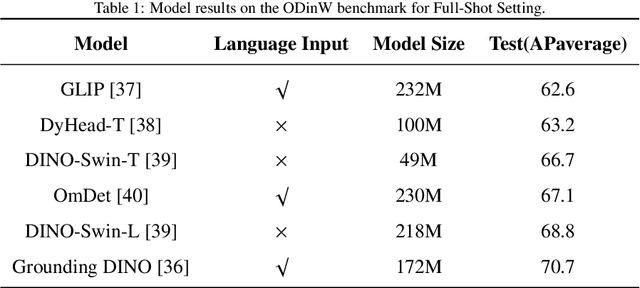
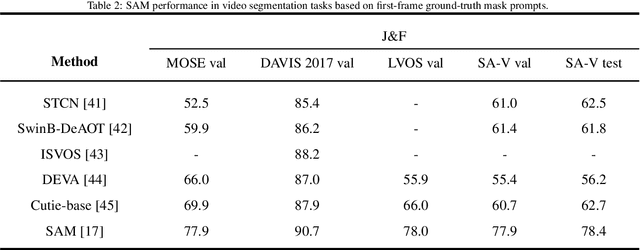

Abstract:Building facades represent a significant untapped resource for solar energy generation in dense urban environments, yet assessing their photovoltaic (PV) potential remains challenging due to complex geometries and semantic com ponents. This study introduces SF-SPA (Semantic Facade Solar-PV Assessment), an automated framework that transforms street-view photographs into quantitative PV deployment assessments. The approach combines com puter vision and artificial intelligence techniques to address three key challenges: perspective distortion correction, semantic understanding of facade elements, and spatial reasoning for PV layout optimization. Our four-stage pipeline processes images through geometric rectification, zero-shot semantic segmentation, Large Language Model (LLM) guided spatial reasoning, and energy simulation. Validation across 80 buildings in four countries demonstrates ro bust performance with mean area estimation errors of 6.2% ± 2.8% compared to expert annotations. The auto mated assessment requires approximately 100 seconds per building, a substantial gain in efficiency over manual methods. Simulated energy yield predictions confirm the method's reliability and applicability for regional poten tial studies, urban energy planning, and building-integrated photovoltaic (BIPV) deployment. Code is available at: https:github.com/CodeAXu/Solar-PV-Installation
pyFAST: A Modular PyTorch Framework for Time Series Modeling with Multi-source and Sparse Data
Aug 26, 2025Abstract:Modern time series analysis demands frameworks that are flexible, efficient, and extensible. However, many existing Python libraries exhibit limitations in modularity and in their native support for irregular, multi-source, or sparse data. We introduce pyFAST, a research-oriented PyTorch framework that explicitly decouples data processing from model computation, fostering a cleaner separation of concerns and facilitating rapid experimentation. Its data engine is engineered for complex scenarios, supporting multi-source loading, protein sequence handling, efficient sequence- and patch-level padding, dynamic normalization, and mask-based modeling for both imputation and forecasting. pyFAST integrates LLM-inspired architectures for the alignment-free fusion of sparse data sources and offers native sparse metrics, specialized loss functions, and flexible exogenous data fusion. Training utilities include batch-based streaming aggregation for evaluation and device synergy to maximize computational efficiency. A comprehensive suite of classical and deep learning models (Linears, CNNs, RNNs, Transformers, and GNNs) is provided within a modular architecture that encourages extension. Released under the MIT license at GitHub, pyFAST provides a compact yet powerful platform for advancing time series research and applications.
Prototype-based Heterogeneous Federated Learning for Blade Icing Detection in Wind Turbines with Class Imbalanced Data
Mar 11, 2025Abstract:Wind farms, typically in high-latitude regions, face a high risk of blade icing. Traditional centralized training methods raise serious privacy concerns. To enhance data privacy in detecting wind turbine blade icing, traditional federated learning (FL) is employed. However, data heterogeneity, resulting from collections across wind farms in varying environmental conditions, impacts the model's optimization capabilities. Moreover, imbalances in wind turbine data lead to models that tend to favor recognizing majority classes, thus neglecting critical icing anomalies. To tackle these challenges, we propose a federated prototype learning model for class-imbalanced data in heterogeneous environments to detect wind turbine blade icing. We also propose a contrastive supervised loss function to address the class imbalance problem. Experiments on real data from 20 turbines across two wind farms show our method outperforms five FL models and five class imbalance methods, with an average improvement of 19.64\% in \( mF_{\beta} \) and 5.73\% in \( m \)BA compared to the second-best method, BiFL.
An End-to-End Model for Time Series Classification In the Presence of Missing Values
Aug 11, 2024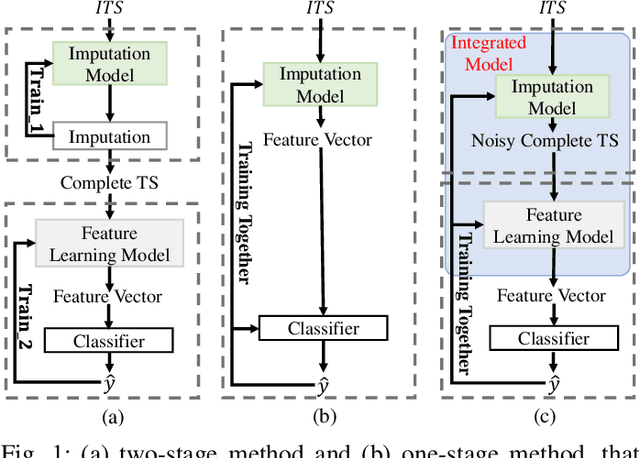
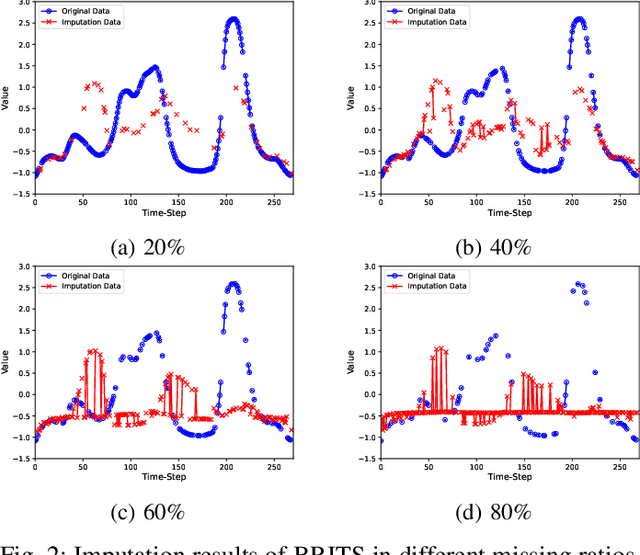
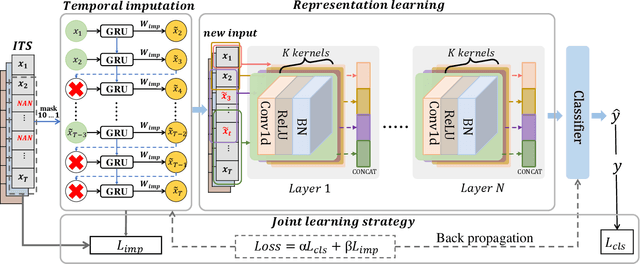
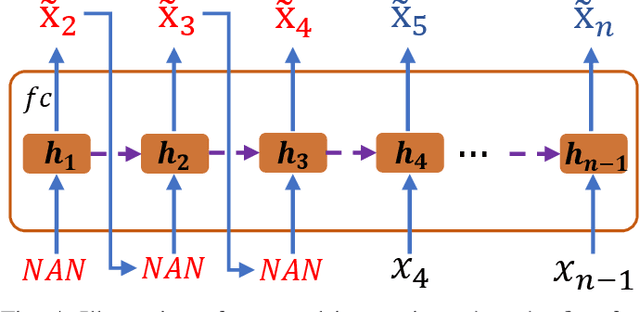
Abstract:Time series classification with missing data is a prevalent issue in time series analysis, as temporal data often contain missing values in practical applications. The traditional two-stage approach, which handles imputation and classification separately, can result in sub-optimal performance as label information is not utilized in the imputation process. On the other hand, a one-stage approach can learn features under missing information, but feature representation is limited as imputed errors are propagated in the classification process. To overcome these challenges, this study proposes an end-to-end neural network that unifies data imputation and representation learning within a single framework, allowing the imputation process to take advantage of label information. Differing from previous methods, our approach places less emphasis on the accuracy of imputation data and instead prioritizes classification performance. A specifically designed multi-scale feature learning module is implemented to extract useful information from the noise-imputation data. The proposed model is evaluated on 68 univariate time series datasets from the UCR archive, as well as a multivariate time series dataset with various missing data ratios and 4 real-world datasets with missing information. The results indicate that the proposed model outperforms state-of-the-art approaches for incomplete time series classification, particularly in scenarios with high levels of missing data.
High-order Spatial Interactions Enhanced Lightweight Model for Optical Remote Sensing Image-based Small Ship Detection
Apr 07, 2023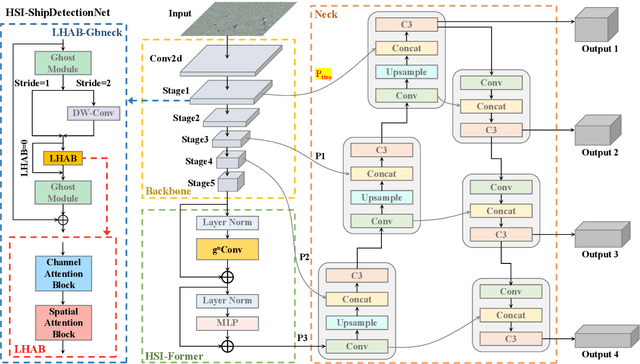



Abstract:Accurate and reliable optical remote sensing image-based small-ship detection is crucial for maritime surveillance systems, but existing methods often struggle with balancing detection performance and computational complexity. In this paper, we propose a novel lightweight framework called \textit{HSI-ShipDetectionNet} that is based on high-order spatial interactions and is suitable for deployment on resource-limited platforms, such as satellites and unmanned aerial vehicles. HSI-ShipDetectionNet includes a prediction branch specifically for tiny ships and a lightweight hybrid attention block for reduced complexity. Additionally, the use of a high-order spatial interactions module improves advanced feature understanding and modeling ability. Our model is evaluated using the public Kaggle marine ship detection dataset and compared with multiple state-of-the-art models including small object detection models, lightweight detection models, and ship detection models. The results show that HSI-ShipDetectionNet outperforms the other models in terms of recall, and mean average precision (mAP) while being lightweight and suitable for deployment on resource-limited platforms.
A Review of Federated Learning in Energy Systems
Aug 20, 2022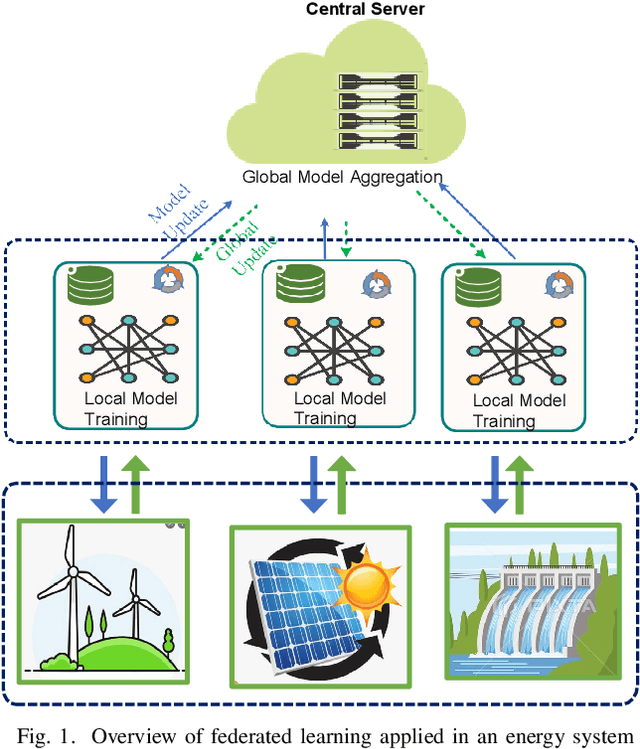
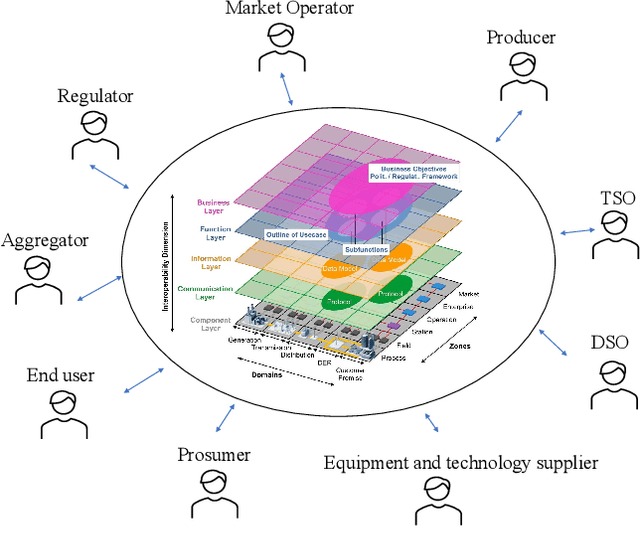
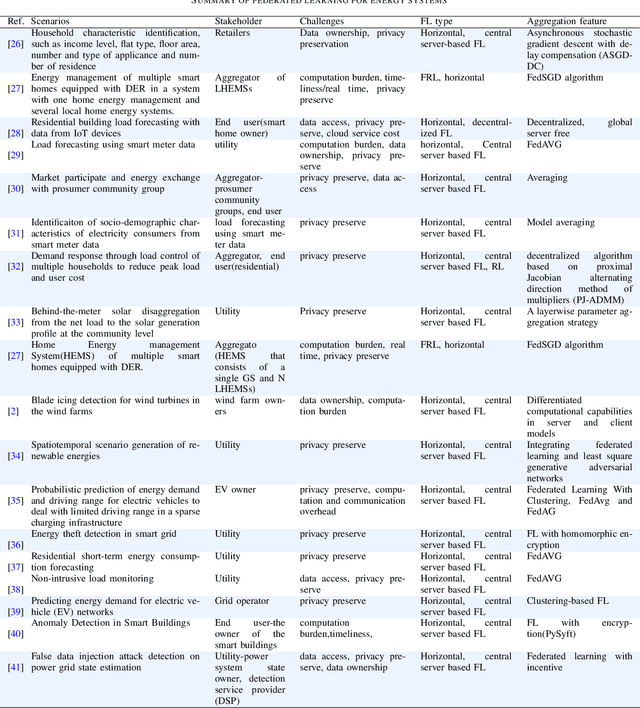
Abstract:With increasing concerns for data privacy and ownership, recent years have witnessed a paradigm shift in machine learning (ML). An emerging paradigm, federated learning (FL), has gained great attention and has become a novel design for machine learning implementations. FL enables the ML model training at data silos under the coordination of a central server, eliminating communication overhead and without sharing raw data. In this paper, we conduct a review of the FL paradigm and, in particular, compare the types, the network structures, and the global model aggregation methods. Then, we conducted a comprehensive review of FL applications in the energy domain (refer to the smart grid in this paper). We provide a thematic classification of FL to address a variety of energy-related problems, including demand response, identification, prediction, and federated optimizations. We describe the taxonomy in detail and conclude with a discussion of various aspects, including challenges, opportunities, and limitations in its energy informatics applications, such as energy system modeling and design, privacy, and evolution.
Smart Meter Data Anomaly Detection using Variational Recurrent Autoencoders with Attention
Jun 08, 2022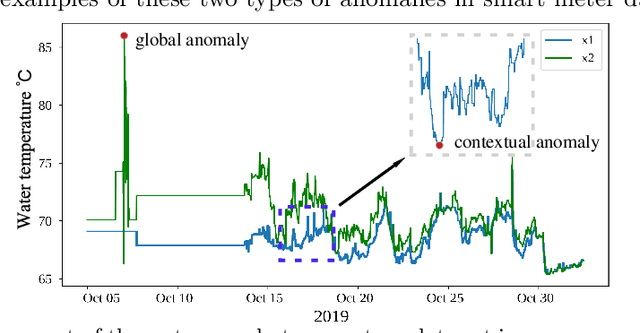
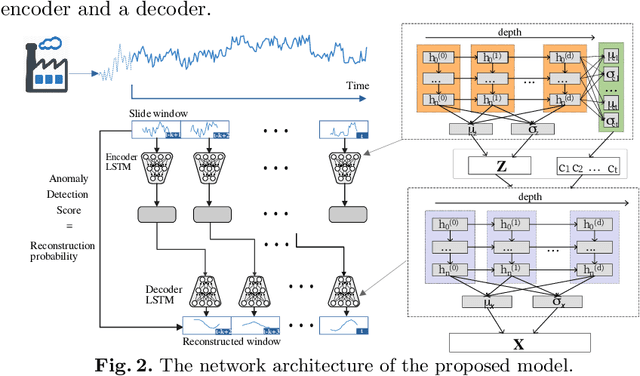
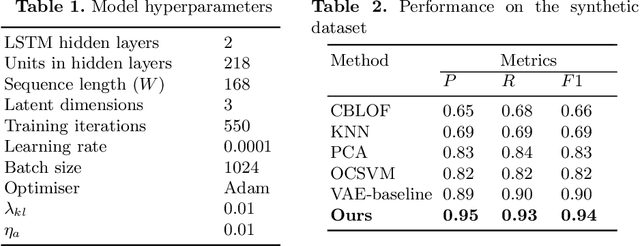

Abstract:In the digitization of energy systems, sensors and smart meters are increasingly being used to monitor production, operation and demand. Detection of anomalies based on smart meter data is crucial to identify potential risks and unusual events at an early stage, which can serve as a reference for timely initiation of appropriate actions and improving management. However, smart meter data from energy systems often lack labels and contain noise and various patterns without distinctively cyclical. Meanwhile, the vague definition of anomalies in different energy scenarios and highly complex temporal correlations pose a great challenge for anomaly detection. Many traditional unsupervised anomaly detection algorithms such as cluster-based or distance-based models are not robust to noise and not fully exploit the temporal dependency in a time series as well as other dependencies amongst multiple variables (sensors). This paper proposes an unsupervised anomaly detection method based on a Variational Recurrent Autoencoder with attention mechanism. with "dirty" data from smart meters, our method pre-detects missing values and global anomalies to shrink their contribution while training. This paper makes a quantitative comparison with the VAE-based baseline approach and four other unsupervised learning methods, demonstrating its effectiveness and superiority. This paper further validates the proposed method by a real case study of detecting the anomalies of water supply temperature from an industrial heating plant.
 Add to Chrome
Add to Chrome Add to Firefox
Add to Firefox Add to Edge
Add to Edge